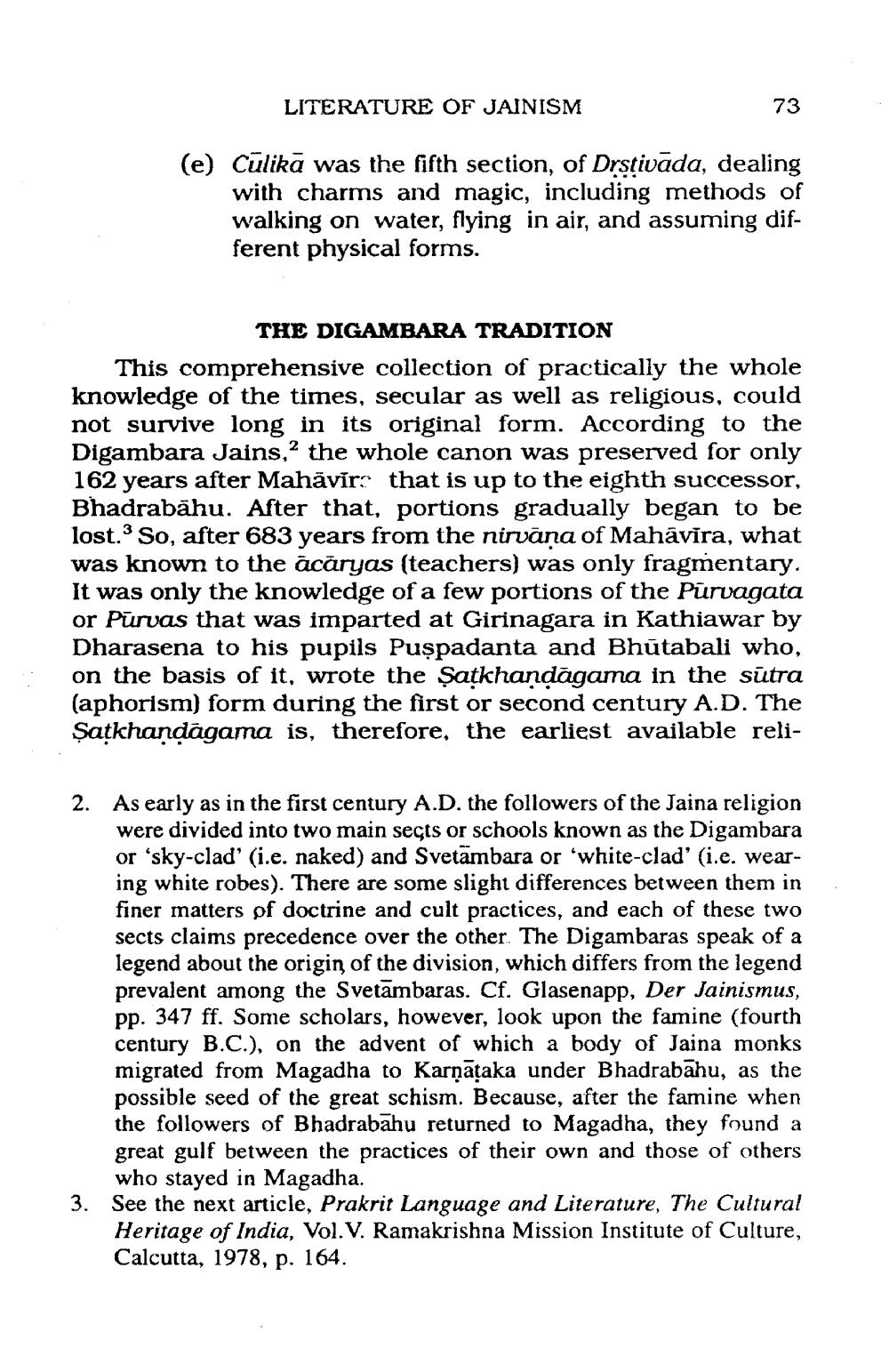________________
LITERATURE OF JAINISM
73
(e) Cūlikā was the fifth section, of Drstivāda, dealing
with charms and magic, including methods of walking on water, flying in air, and assuming different physical forms.
THE DIGAMBARA TRADITION This comprehensive collection of practically the whole knowledge of the times, secular as well as religious, could not survive long in its original form. According to the Digambara Jains, the whole canon was preserved for only 162 years after Mahāvír: that is up to the eighth successor, Bhadrabāhu. After that, portions gradually began to be lost. So, after 683 years from the nirvana of Mahāvīra, what was known to the acaryas (teachers) was only fragmentary. It was only the knowledge of a few portions of the Pūrvagata or Pūrvas that was imparted at Girinagara in Kathiawar by Dharasena to his pupils Puşpadanta and Bhūtabali who, on the basis of it, wrote the Șatkhandagama in the sūtra (aphorism) form during the first or second century A.D. Th Satkhandagama is, therefore, the earliest available reli
2. As early as in the first century A.D. the followers of the Jaina religion
were divided into two main sects or schools known as the Digambara or 'sky-clad' (i.e. naked) and Svetambara or 'white-clad' (i.e. wearing white robes). There are some slight differences between them in finer matters of doctrine and cult practices, and each of these two sects claims precedence over the other. The Digambaras speak of a legend about the origin of the division, which differs from the legend prevalent among the Svetāmbaras. Cf. Glasenapp, Der Jainismus pp. 347 ff. Some scholars, however, look upon the famine (fourth century B.C.), on the advent of which a body of Jaina monks migrated from Magadha to Karnataka under Bhadrabahu, as the possible seed of the great schism. Because, after the famine when the followers of Bhadrabahu returned to Magadha, they found a great gulf between the practices of their own and those of others
who stayed in Magadha. 3. See the next article, Prakrit Language and Literature, The Cultural
Heritage of India, Vol.V. Ramakrishna Mission Institute of Culture, Calcutta, 1978, p. 164.




